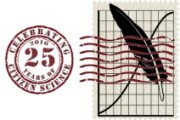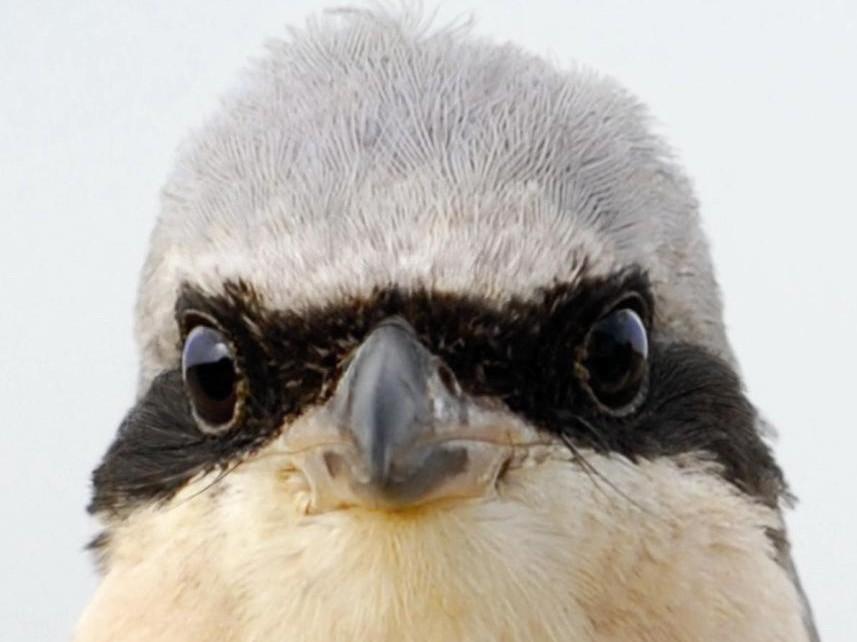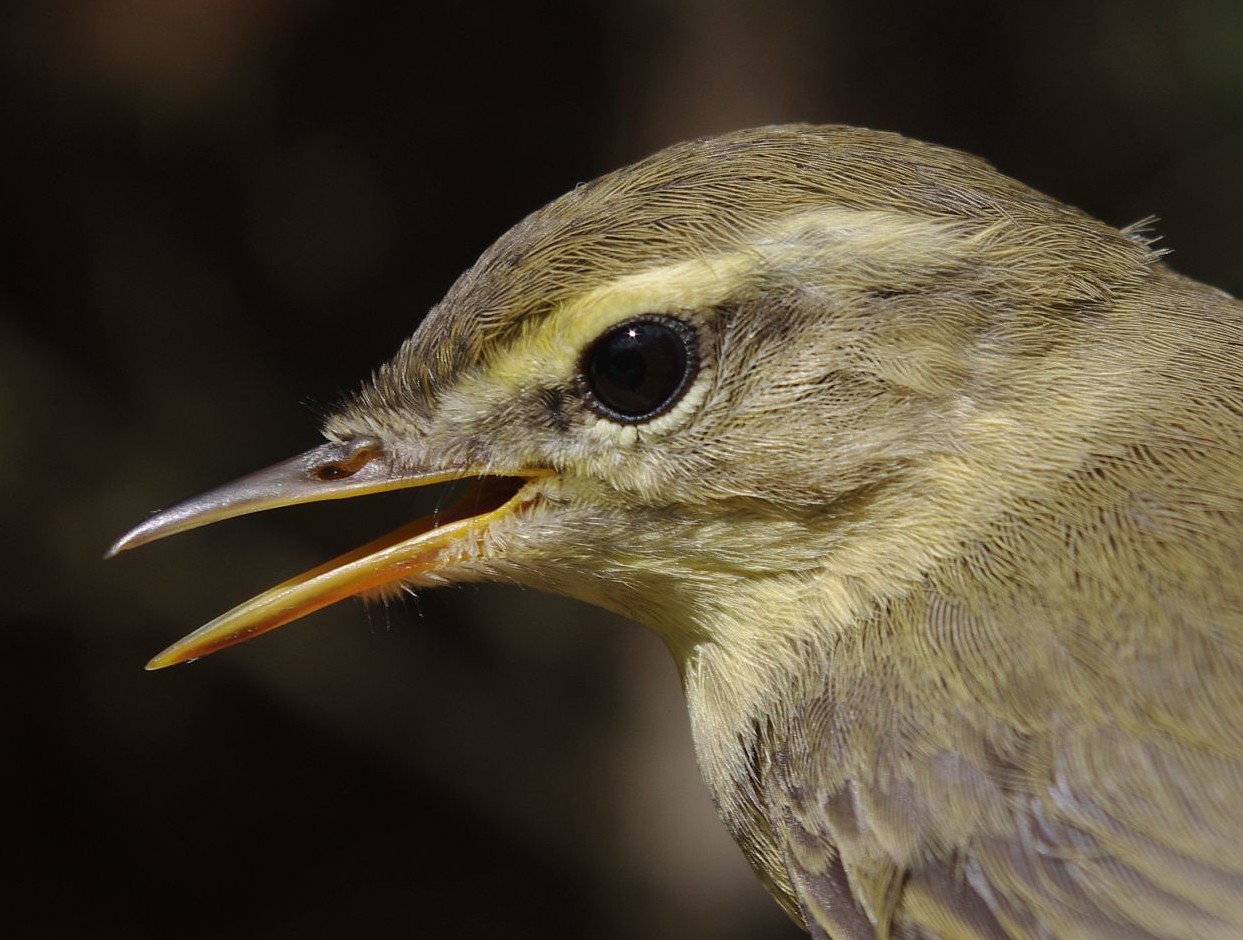Building an Early Warning System for Biodiversity in the Face of Climate Change (2016-2018) (Project PL-RPA/BEW/01/2016).
The project is jointly funded in South Africa by the National Research Foundation (NRF) and in Poland by the Narodowe Centrum Badań i Rozwoju (NCBR) (National Centre for Research and Development), within a research cooperation agreement between Poland and South Africa.




Migrant Birds as Indicators of Climate Change
13–16 December 2018, Gdańsk, Poland
Conference Announcement
News
Expedition of the Bird Migration Research Station team to South Africa
“Migrant Birds as Indicators of Climate Change” conference and workshops – summary with photos
Visitors from Barberspan Nature Reserve, South Africa, at Operation Baltic
Recent research paper of our station
Red-backed Shrikes are returning to Barberspan – and so is BMRS team
Global climate change caused by industrial development has had important impacts on biodiversity throughout the world. Climate change puts pressure on birds’ life-cycles, and some species that migrate between breeding grounds in Europe and non-breeding grounds in Africa can adjust the timing of their migration and moult in relation to the changing climate at both ends of their flyways.
As a result, it is possible to detect the effects of climate change in one part of the world on populations at the other end of the migration, most clearly for populations that breed, migrate and moult together (those with ‘strong connectivity’). When populations separate during migration and mix with others, the impacts of climate change can be masked by the migratory mixing. Examining migratory connectivity is therefore an essential additional component of this project.
The project examines two central hypotheses about birds and climate change:
- That the timing of bird migration changes from year to year in relation to changing climate, and that this affects the timing of moult.
- That long-term changes in climate are affecting bird migrations and moult at each end of the flyway, in Poland and South Africa.
To address these hypotheses, we are studying the long-term effects of climate change on migration and moult in long-distance and shorter-distance migrants. The first group, representing several different ecological groups of migrants, comprises species that breed in or near Poland and migrate to non-breeding grounds in South Africa. The long-distance migrant study species are the Little Stint Calidris minuta, Willow Warbler Phylloscopus trochilus, Barn Swallow Hirundo rustica, Red-backed Shrike Lanius collurio, Garden Warbler Sylvia borin and the Spotted Flycatcher Muscicapa striata. Statistical methods developed for these species are now being applied to two common shorter distance migrants, the Song Thrush Turdus philomelos and Great Tit Parus major.
The project makes use of several long-term data sets: the South African bird atlas projects, SABAP1 (1987 – 1991) and SABAP2 (2007 – ongoing) (http://sabap2.adu.org.za); the South African Bird Ringing Unit (SAFRING) data (1948 – ongoing) (http://safring.adu.org.za); and from Poland, the Operation Baltic project (1961 – ongoing) (http://www.akbalt.ug.edu.pl). The data are mostly collected by citizen scientists – non-professional but highly experienced bird atlassers in South Africa, and by qualified bird ringers in both countries. These data sets reflect the contribution of thousands of volunteers.
The project involves reciprocal visits, for fieldwork as well as statistical analysis, of researchers and PhD and MSc students between South Africa and Poland. The fieldwork involves bird ringing to collect data on the migration and moult of birds, and fitting geolocators to track individual flyways for some of the study species. Our teams bring with them a diversity of skills in avian biology, long-term and constant effort monitoring, and statistical modelling.
The statistical ecology component of the project aims to model the effects of climate change on bird migration and moult at different scales in space and time. These methods will facilitate the further analysis of the Operation Baltic bird monitoring data set, which currently has 56 years of data, and of the long-term South African data sets.
In South Africa the project also has a social development component, by providing people from previously disadvantaged backgrounds with opportunities to study bird monitoring and biodiversity, either as field rangers or as university students.
Although the project is scheduled for three years, we have the long-term vision and ultimate goal of developing an “early-warning system” for climate change. This system, with massive support from citizen scientists, will be used to raise flags about the long-term effects of global change, and specifically climate change, on biodiversity. The project has been underway since 2016 and runs until the end of 2018.
South African affiliations and support:
Some of our project work is done in collaboration with the Centre for Statistics in Ecology, the Environment, and Conservation (http://www.seec.uct.ac.za), a research unit that combines expertise in statistics and ecology. We also acknowledge the support of the African Climate and Development Initiative (http://www.acdi.uct.ac.za) in promoting the PhD research into barn swallow phenology, which is contributing to some of our current work.



Project team:
Project leaders: Dr Magdalena Remisiewicz (Poland), Prof. Les G. Underhill (South Africa), Coordinators: Ms Sue Kuyper, Ms Amour McCarthy (South Africa); Ms Justyna Szulc (Poland)
Project participants:
BMRS: Dr Magdalena Remisiewicz, Ms Aleksandra Niemc, Ms Justyna Szulc, Mr Krzysztof Stępniewski, Ms Katarzyna Stępniewska, Mr Tomasz Maciąg, Dr Jarosław K. Nowakowski, Mr Michał Redlisiak, Ms Katarzyna Rosińska;
ADU: Prof. Les G. Underhill, Dr Marc Burman, Ms Megan Loftie-Eaton, Ms Jacqui Badenhorst, Dr Dieter Oschadleus, Mr Jerome Ainsley.
Collaborators: Dr Zephné Bernitz, Prof. Herman Bernitz, Prof. Darrell Abernethy (University of Pretoria, South Africa), Mr Joel Avni (Bird’s-Eye View, South Africa), Mr Anthony J. Tree (Port Alfred, RPA), Dr Yahkat Barshep (ADU; APLORI, Nigeria), Mr Sampie van der Merwe, Mr Andrew Mvundle, Mr Amos Koloti, Ms Kelebogile Moeti, Ms Boitumelo Keebine, Mr Piet Mogolegwa (Barberspan Bird Sanctuary, NW Parks Board, South Africa).
Papers:
- Remisiewicz M., Tree A.J., Underhill L.G., Burman M.S. 2017. Age-specific variation in relationship between moult and pre-migratory fuelling in Wood Sandpipers Tringa glareola in southern Africa. Ibis 159: 91–102.
- Burman, M. S., Underhill, L. G., Altwegg, R., Erni, B., Remisiewicz, M. & MacLeod, J. (Under review). Migratory connectivity of barn swallows in South Africa to their Palearctic breeding grounds.
- Redlisiak M., Remisiewicz M., Nowakowski J.K. (Under review). Many-year trends in migration timing of Song Thrush (Turdus philomelos) at the southern Baltic coast in response to spring and summer temperatures on route and at breeding grounds.
Papers in progress:
- Remisiewicz M., Bernitz , Bernitz H., Raijmakers J.M.H., Raijmakers J.H., Underhill L.G. , Burman M.S., Rostkowska A., Barshep Y., Soloviov S.A., Siwek I. Wing moult and pre-migratory fuelling in Common Whitethroats Sylvia communis of medium-distance and long-distance migrant populations.
- Niemc A., Remisiewicz M., Underhill L.G. Sex differences in pre-breeding body moult and fuelling of Little Stints (Calidris minuta) in South Africa.
- Niemc A., Remisiewicz M., Avni J., Underhill L.G. Sexual dimorphism in Little Stints (Calidris minuta) revealed by DNA sexing and discriminant analysis.
- Redlisiak M., Remisiewicz M., Niemc A. Sex-differential response to spring and summer temperatures determine many-year trends in timing of Song Thrush (Turdus philomelos) migration at the southern Baltic coast.
- Burman, M.S., Underhill, L. G., Altwegg, R., Erni, B., Remisiewicz, M. Citizen science reveals consistent phenological changes in three life-cycle stages for barn swallows in South Africa.
- Burman, M.S., Underhill, L. G., Altwegg, R., Erni, B., Remisiewicz, M. Methods for analysing moult data using the Underhill-Zucchini moult model.
- Burman, M.S., Underhill, L. G., Altwegg, R., Erni, B., Remisiewicz, M. Misclassification of barn swallow age classes in South Africa and its impact on moult phenology estimates.
- Burman, M.S., Underhill, L. G., Altwegg, R., Erni, B., Remisiewicz, M. Barn swallow body masses in Africa – an overview.
Selected presentations at conferences and seminars:
- Niemc A., Remisiewicz M., Undehill L.G. 2017. Sex differences in pre-breeding body moult of Little Stints – new application of Underhill-Zucchini moult model. International Wader Study Group Conference, 15–18 September 2017, Prague, Czech Republic (talk).
- Badenhorst J., Remisiewicz M., Underhill L.G. 2017. Temporal changes in the timing of autumn migration of first-year spotted flycatchers through the Polish Baltic coast in response to temperatures there and at breeding grounds in Finland. 11th European Ornithologists Union conference, 18-22 August 2017, Turku, Finland (poster).
- Remisiewicz M., Maciąg T., Nowakowski J.K., Redlisiak M. 2016. Long-term ringing shows fluctuating populations of forest passerines migrating through the Polish Baltic coast. European Bird Census Council Conference, 5-9 September 2016, Germany (poster).
- Redlisiak M., Remisiewicz M., Nowakowski J.K. 2016. Long-term changes in timing of autumn migration through southern Baltic in first-year Song Thrush related to temperatures at breeding grounds. European Bird Census Council Conference, 5-9 September 2016, Halle, Germany (poster).
- Remisiewicz M., Tree A.J., Underhill L.G. 2016. Age-differential effect of body mass on moult onset in Wood Sandpipers Tringa glareola in southern Africa. International Wader Study Group Conference, 10-12.09.2016, Trabolgan, Irlandia (talk).
- Remisiewicz M., Avni J. 2016. Barberspan: place for birds to rest and recover. Ecological Management Commitee meeting, 10.04.2016, Barberspan, RPA (talk).
- Burman M. S. 2016. Barn swallows in South Africa responding to Palearctic climate changes in the 1990s and 2000s – context, evidence and implications. Lecture in the series “Contemporary Biology”, Faculty of Biology, University of Gdańsk, Poland, 4 November 2016.
- Burman M. S., Redlisiak M. 2016. The importance of 'finding probability’ when estimating migratory mixing: comparing a short- and long-distance migrant species. Seminar of the Bird Migration Research Station, University of Gdańsk, 10 November 2016.
PhD theses:
Completed:
- Burman M. S. Citizen science reveals complex changes in barn swallow phenology in South Africa over three decades. PhD thesis. Department of Biological Sciences, University of Cape Town. Supervisors: Prof. Les G. Underhill, Assoc. Prof. Res Altwegg, Dr Birgit Erni, Dr Magdalena Remisiewicz. Graduated on 16 December 2016.
In progress:
- Loftie-Eaton M. The Impacts of Bush Encroachment on Bird Distributions in the Savanna Biome of South Africa.Animal Demography Unit, University of Cape Town, South Africa. Supervisor: Prof. Les G. Underhill.
- Badenhorst J. Changes in distribution, seasonality and abundance of Red-backed Shrike Lanius collurio and Spotted Flycatcher Muscicapa striata in Europe and Africa. Animal Demography Unit, University of Cape Town, South Africa. Supervisors: Prof. Les G. Underhill, Dr Magdalena Remisiewicz, Prof. Bruno Bruderer.
- Niemc A. Różnice płciowe w strategii wędrówek i pierzenia biegusów malutkich zimujących w Republice Południowej Afryki. [Sex differences in migration and moult strategies in Little Stints at the non-breeding grounds in South Africa]. Bird Migration Research Station, Faculty of Biology, University of Gdańsk. Supervisors: Dr Magdalena Remisiewicz, Prof. Les G. Underhill.
Msc theses
Completed:
- Maciąg T. 2017. [Long-term trends in numbers of selected species of passerines migrating through the southern Baltic coast]. Bird Migration Research Station, Faculty of Biology, University of Gdańsk.Supervisor: Dr Magdalena Remisiewicz.
In progress:
- Gruchocka J. [Many-year changes in spring migration timing of Willow Warbler Phylloscopus trochilus and Chiffchaff Phylloscopus collybita at the Baltic coast in response to climate change]. Bird Migration Research Station, Faculty of Biology, University of Gdańsk. Supervisor: Dr Magdalena Remisiewicz.
- Pinszke A. [Many-year changes in migration timing of Garden Warbler Sylvia borin and Lesser Whitethroat Sylvia curruca at the Baltic coast in response to climate change]. Bird Migration Research Station, Faculty of Biology, University of Gdańsk. Supervisor: Dr Magdalena Remisiewicz.
BSc theses
Completed:
- Pinszke A. 2017. Wieloletnie zmiany terminów jesiennej wędrówki gajówki Sylvia borin w rejonie Bałtyku w odpowiedzi na zmiany temperatury [Many-year changes in spring migration timing of Garden Warbler Sylvia borin at the Baltic coast in response to changing temperatures]. Bird Migration Research Station, Faculty of Biology, University of Gdańsk. Supervisor: Dr Magdalena Remisiewicz.



